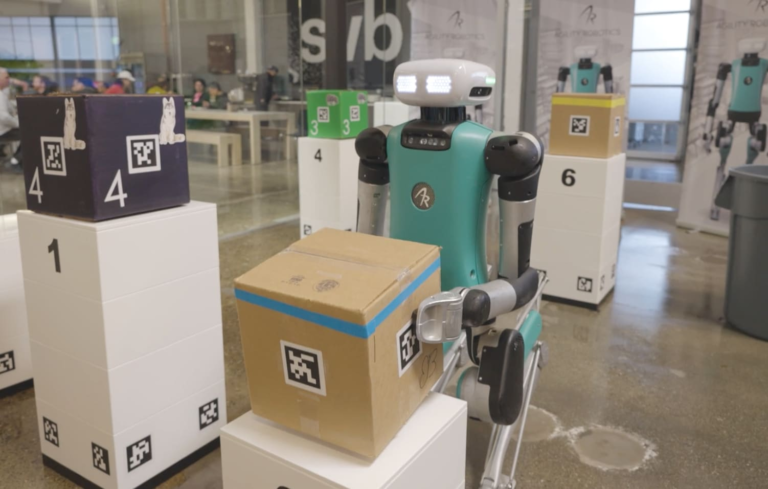For now, they’re deployed in warehouses. But their proponents say the possibilities extend far beyond distribution centers. These robots could eventually work alongside people, in homes and offices.
Tesla CEO Elon Musk is one of the main proponents of this idea. The electric vehicle maker is banking on its Optimus robot, which he says “will change the world to a greater degree than cars.”
During the company’s first-quarter earnings call, Elon Musk said Optimus could propel the company to a $25 trillion market cap and would represent “the majority of Tesla’s long-term value.” Amazon has backed Agility Robotics and is already deploying its Digit robots in fulfillment centers.
According to an analysis by Goldman Sachs, the market for humanoids is expected to reach $38 billion in the next 20 years. The firm predicts that these robots will be the next “must-have” devices, like smartphones or electric vehicles. Goldman adds that humanoids could be “essential for manufacturing and hazardous work, but they would also help care for the elderly and fill labor shortages in factories.”
These humanoid robots have been around for decades. But the industry is seeing renewed optimism thanks to recent advances in artificial intelligence. The same technology behind OpenAI’s ChatGPT allows the robots to interpret language and commands, and make decisions about how to act. The machines use computer vision and, like humans, train in real-world scenarios.
“Robotics is where artificial intelligence meets reality,” Henrik Christensen, a professor of computer science and engineering at the University of California, San Diego, told CNBC. “It’s leading to some really exciting new combinations that we couldn’t have imagined five years ago.”
Another factor driving the recent interest in humanoids is the global labor shortage. In the United States alone, there are about 8.5 million jobs, according to the U.S. Chamber of Commerce. The deficit is particularly severe in manufacturing, where Goldman estimates there is a shortage of 500,000 workers, and that number is expected to grow to 2 million workers by 2030. Proponents of the idea argue that robots take on monotonous and dangerous jobs.
“We start with what we call the boring, dirty, dangerous jobs, the jobs where we have big labor shortages today, where we don’t have people to do that job,” said Jeff Cardenas, CEO and co-founder of robot startup Apptronik.
The competition is global. China already dominates the sector, surpassing Japan in 2013 as the world’s largest installer of industrial robots, and now accounts for more than half of the global total, according to Stanford’s AI Index report.
“The Chinese market is the largest in the world,” said Tom Andersson, principal analyst at Styleintelligence, adding that the only other Western company that produces something similar to what China produces is Amazon. “But Chinese companies are catching up fast.”
There are still hurdles to overcome, however: the machines are expensive, and letting robots move freely in factories raises safety concerns.
“As far as mass adoption or even something that comes close to it, I think we’ll have to wait a few years. Probably a decade at least,” Andersson said. “Sorry, Musk.”
Watch the full video to learn more about the rise of humanoid robots.


